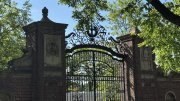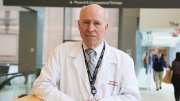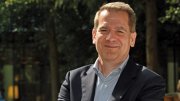Unveiling his strategy for Tufts University in early 2003, then-president Lawrence S. Bacow spelled out both the aspiration (“great students, great faculty, and great staff”) and the under-the-hood work required to achieve it. “There are three scarce resources in a university: money, space, and faculty slots,” he wrote. “We must allocate these resources to help us attract, recruit, and retain the very best students and the very best faculty….We must be crystal clear about our academic priorities”—and toward that end, “I have already restructured our budget process” to originate centrally and focus those resources on that academic mission, sending “important messages about how we are changing the way we do business.”
Amplifying his message about the most prominent of those resources, he continued, “[W]e have to be much more strategic and less opportunistic. We must articulate our academic priorities and sell them to donors—and not let donors drive our decision making. If we cannot convince donors to invest in our priorities, we must have courage to turn down their support. This is not easy, but the surest way for a university to go broke is to take 50 percent of the money to underwrite a project or program that is not otherwise a priority. We will not do that on my watch.” And again, “We are only going to undertake sustainable new initiatives. Endowment here is the key. It is not enough for somebody to fund a new activity for a year or two.…If a new initiative cannot be sustained, we are not going to do it.”
He elaborated those themes forcefully in his 2017 lecture on “The Political Economy of Cost Control on a University Campus,” at Berkeley, going so far as to say “capital campaigns can actually weaken institutions financially” if gifts do not fully pay for their intended objective, but instead impose a drain on the permanent funding dedicated to a school’s core mission.
What would such strictures look like applied here? Are there activities that lie beyond the core mission—and beyond what even Harvard, with its $39.2-billion endowment, can sustain?
Consider, for example, Smith Campus Center, the reenvisioned Holyoke Center, which debuted on September 20, the capstone of President Drew Faust’s “Common Spaces” initiative. One element was an elegant restoration of the building’s original concrete exterior. The top level now has a new meeting space. And the project repurposed and expanded the lower levels; the first couple of floors now offer a food court, performance places, and inviting areas to hang out. There are enticing new options, like the treed terrace overlooking Dunster Street, and one imagines students thronging the tenth-floor lounge to play pool, or adults enjoying a drink there, taking in the nifty campus views. The whole project is very well done, and users have voted with their feet (the center has been plenty busy); the complex might even help Harvard Square regain some of the vibe that has of late shifted downriver to Kendall Square.
But that begs the hard questions: Are these uses core to the mission? Complementary to life in the undergraduate Houses—or in competition? Does the Smith Center, accommodating seven food vendors, uniquely provide services that local merchants cannot? How do its worthwhile goals rank among Harvard priorities? Did the cost, rumored to exceed $100 million for construction and furnishing, include cash for operations? Or will they be a drain on the the president’s funds (some of which arrive via levies on the schools’ endowments)? What about the Common Spaces programming, much of it fun and entertaining, on the Science Center Plaza?
Similar questions could be addressed to other recent projects. Is Harvard Kennedy School better or worse off financially now that its campus quadrangle has been reconfigured and expanded—to accommodate both classrooms and large dining and social spaces? The renewed Houses meet much higher energy-efficiency standards, but the Faculty of Arts and Sciences has explained that they cost more to run because they comply with modern codes, include spaces recaptured from basements and surplus nooks and crannies, and have air-conditioned common facilities. The new home for much of the engineering and applied sciences faculty rising in Allston promises to be snazzy and exciting—but also expensive to use; the terms of bearing those costs, at latest inquiry, remain to be determined.
Some elements of some of these enhancements are clearly core to the affected schools’ teaching and research. Are they all? What about any of dozens of academic centers, programs, and initiatives of yore: are they still intellectually lively—or long in the tooth?
There is, at this moment, another perspective to consider. How central to the academic mission, as Harvard defines it, do nice amenities appear to a public skeptical about the costs and benefits of higher education? This is, admittedly, a different sort of hurdle to ask projects or investments to surmount. But today it may be an appropriate one: if there is a reputational cost, it is a cost.
During a conversation before he became president (see “The Pragmatist,” September-October, page 32), Bacow said his warnings about higher-education costs apply to Harvard, too. It has important aspirations consistent with its educational and scholarly missions—and both remain equally important to the wider world. It is blessed with great resources, but not infinite ones—and some of its most ambitious aims (like transformative discoveries in biomedical science and health care) are among the most expensive fields of inquiry on the planet. Even if exciting partnerships on a new scale emerge to pursue these opportunities, Harvard will still have heavy lifting to do.
Based on his record, the new president should have no trouble identifying and articulating those aspirations in a way consistent with the University’s core academic purposes. Nor will he brush off the nitty-gritty work of budgeting, trying to direct philanthropy, and harnessing the institution’s energies toward those ends—an equally or even more important factor in making the place succeed. Attentive members of the community might want to pay particular attention to those latter aspects of this new administration’s agenda.
~John S. Rosenberg, Editor








